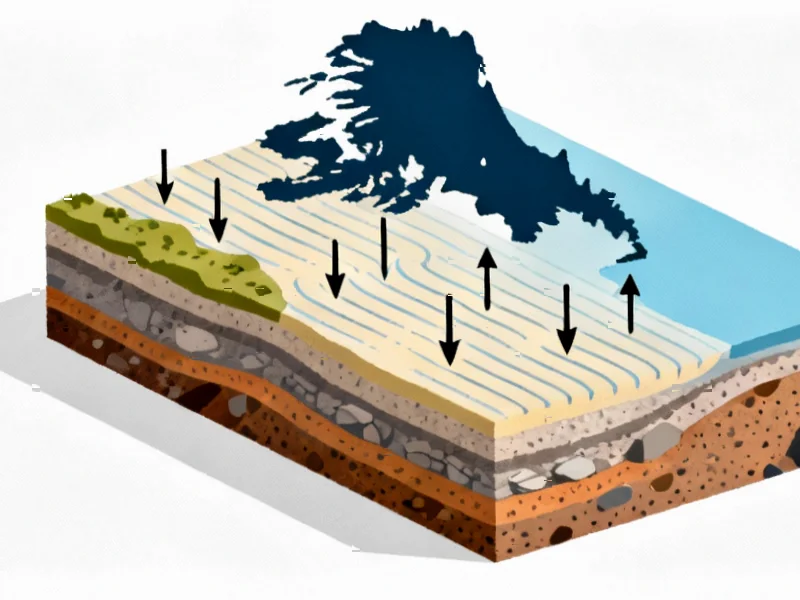According to SciTechDaily, pressure waves from the colossal 2022 Hunga Tonga volcanic eruption traveled 6,000 miles to Alaska, creating seismic vibrations that reached depths of at least 5 kilometers beneath the state’s surface. Researchers from the University of Alaska Fairbanks Geophysical Institute used this rare event to study how atmospheric waves interact with the ground, measuring seismic wave speeds through Alaska’s upper crust. This unconventional approach provides new insights into subsurface characteristics that could significantly improve earthquake hazard analysis.
Table of Contents
Understanding Air-to-Ground Coupling
The phenomenon that allowed pressure waves from a distant volcanic eruption to shake deep underground structures involves a complex process called air-to-ground coupling. When massive atmospheric pressure waves encounter the Earth’s surface, they transfer energy through what’s essentially a forced vibration mechanism. The key factor here is the unprecedented scale of the Hunga Tonga eruption – it generated pressure waves powerful enough to maintain sufficient energy over thousands of miles to still affect deep subsurface structures. This isn’t just about surface effects; we’re talking about energy transmission through multiple geological layers, with the waves behaving differently depending on the material properties they encounter.
Critical Analysis of the Methodology
While this research represents a breakthrough in subsurface imaging, several limitations warrant consideration. The approach relies on exceptionally rare events – volcanic eruptions of this magnitude occur only once every few decades at best. This creates a fundamental dependency on unpredictable natural phenomena rather than controlled, repeatable experiments. Additionally, the method’s effectiveness varies significantly with geographical and geological conditions. Areas with complex subsurface structures or significant anthropogenic noise might not yield equally clear results. The research also assumes consistent wave propagation through the atmosphere, which can be affected by weather patterns and seasonal variations that weren’t accounted for in this single-event study.
Implications for Earthquake Science and Hazard Assessment
This discovery has profound implications for seismic hazard analysis, particularly in tectonically active regions like Alaska. Understanding how seismic waves propagate through different subsurface materials directly affects how we predict ground shaking during earthquakes. The ability to map crustal velocities at multiple depths provides crucial data for improving earthquake location accuracy and understanding how energy amplifies when waves transition between different geological materials. For network operators like the Alaska Earthquake Center, this means potentially significant improvements in their ability to precisely locate earthquakes and predict shaking intensity – information that’s critical for building codes, emergency planning, and public safety.
Future Applications and Research Directions
The methodology demonstrated in this study opens new possibilities for planetary science and resource exploration. Similar approaches could be applied to study the subsurface of other planetary bodies where traditional seismic methods are challenging to implement. For Earth applications, the technique could revolutionize how we approach crustal imaging for geothermal energy exploration, mineral resource assessment, and carbon sequestration site characterization. The research published in Seismica journal suggests we’re only beginning to understand the potential of using natural atmospheric phenomena as imaging tools. As monitoring networks become more sophisticated and widespread, we may see more opportunities to leverage unexpected natural events for scientific discovery, turning catastrophic volcanic eruptions into valuable research opportunities that enhance our understanding of Earth’s deep structure.
Related Articles You May Find Interesting
- Breakthrough Coating Could Revolutionize Solid-State Batteries
- China’s Carbon Rebound Challenge Threatens Climate Goals
- New Bionic Vision System Shows Promise for Reversing Blindness
- Amazon’s €1.4B Dutch Investment Signals European Expansion
- Dynamic Peptide Frameworks Enable Switchable Chiral Materials



